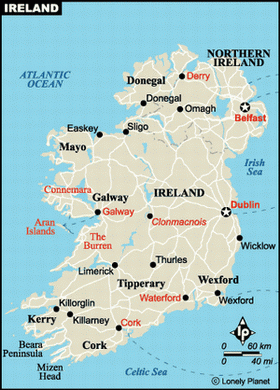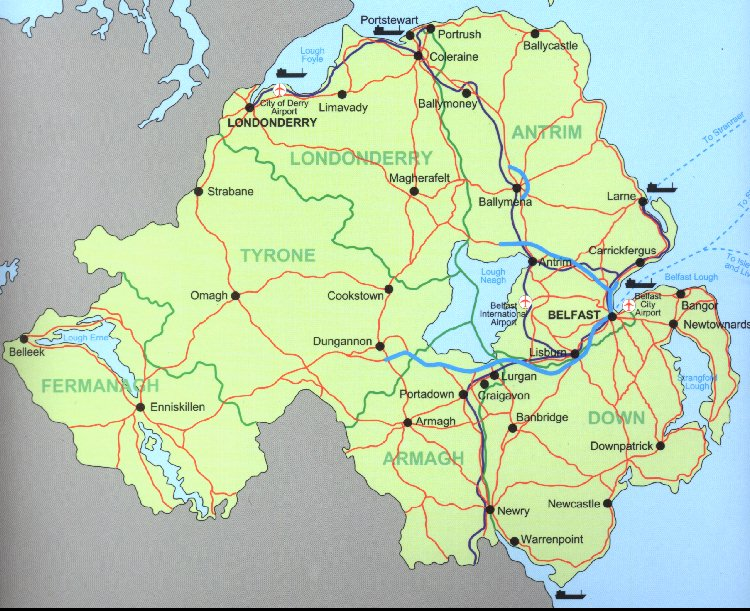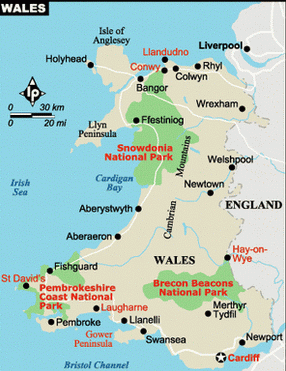
- •Министерство образования рф
- •Part I. The United Kingdom of Great Britain and Northern Ireland Unit1. Cultural aspects of geography
- •United Kingdom of Great Britain and Northern Ireland
- •National flag of the United Kingdom `Union Jack`
- •Physical Features, landscape.
- •England
- •Basic facts:
- •National flag of England
- •Dover Task 2. Read the description of counties and concentrate on cultural associations that geographical names have. While reading make a table:
- •Scotland
- •Basic facts:
- •National flag of Scotland
- •Edinburgh
- •Northern Ireland
- •Basic facts:
- •National flag of Northern Ireland
- •Basic facts:
- •National flag of Wales
- •Task 6. Check yourself questions:
- •Unit2. Population of the uk basic facts:
- •Migration
- •The English
- •The Welsh
- •The Scots
- •The Irish
- •The History and Structure of Immigration
- •Nationality Legislation
- •Culture
- •Asylum seekers bring many benefits
- •Britain opens door for skilled immigrants to fill hi-tech jobs
- •Race row hits Tories
- •Unit 3. Monarchy basic facts:
- •History
- •The Royal Coat of Arms and the Anthem
- •Kensington Palace
- •Task 3.Check yourself questions:
- •50 Facts about the queen's reign
- •50 Facts about the duke of edinburgh
- •Unit 4. Parliament
- •Basic facts:
- •Layout of the Palace of Westminster
- •The House of Lords
- •The House of Commons
- •Conduct of debates in the Commons
- •A typical day's business in the Commons Chamber.
- •Unit 5. Political Parties and Government basic facts:
- •Political Parties
- •The Party System in Parliament
- •Financial Assistance to Parties
- •Local Government
- •The iron lady
- •Tribute to john major
- •Theme 6. Law system
- •Types of Courts
- •High Court CoCourt basic facts:
- •Types of Schools
- •Entry requirement to British universities, colleges or jobs
- •Higher Education
- •Theme 8. Ways of Life in uk basic facts:
- •3. Parks in Great Britain
- •Ingredients:
- •Student d. Scotch Broth
- •Theme 9. Customs and traditions
- •Basic facts:
- •Christmas Traditions
- •Pearly Kings and Queens
- •Scotland’s symbols and traditions
- •The Night of Hogmanay
- •The New Year
- •Highland Games
- •Burns’ Night
- •Gretna Green Marriages
- •Welsh symbols and traditions
- •St David’s Day
- •Wishing Wells and Love Spoons
- •The Red Dragon of Wales
- •Eisteddfod
- •Noson Lawen
- •Cymanfa Ganu
- •Halloween
- •Symbols and traditions of northern ireland
- •The Red Hand of Ulster
- •Shamrock
- •White Ribbon
- •St Patrick’s Day
- •Easter Customs in Northern Ireland
- •Theme 10. Going out
- •Basic facts:
- •English Pubs
- •Pubs in Scotland
- •Irish pubs
- •Welsh pubs
- •January/February/March/April 2003
- •Part II. Republic of Ireland Unit 1. Land and People basic facts:
- •St Patrick’s Cathedral
- •Task 6. Check yourself questions:
- •Task 7. Match up the names of counties and their peculiarities.
- •Task 8. Choose a holiday in Ireland. Discuss the tours with a partner and choose one.
- •Theme 2. History of Ireland
- •Basic facts:
- •A Brief Outline of History
- •Theme 3. Political Life, Economic and Cultural Development of Ireland basic facts:
- •Contents
- •Theme 6. Law system. Skills developed: reading (interpreting facts, summarizing), classification.
- •References:
Northern Ireland

Basic facts:

National flag of Northern Ireland
The patron saint of Ireland: St Patrick.
St Patrick’s Day : March,17, the Irish national day.
Ulster: the other name of Northern Ireland.
The symbol of Ireland: Shamrock.
The Irish national flag: St. Patrick’s Cross.
The capital of Northern Ireland: Belfast.
In 1922 the Irish Parliament accepted the Anglo – Irish treaty for the foundation of an Irish Free State excluding the six counties of Northern Ireland.

Task 4. Read the text and make a quiz on Northern Ireland. Continue the table of task2.
About half of the 1.7 million people in Northern Ireland are settled in the eastern coastal region, the centre of which is the capital, Belfast. Northern Ireland is at its nearest point only 21km (13 miles) from Scotland. It has a 488-km (303-mile) border with the Irish Republic. Following negotiations lasting for over two years, a comprehensive agreement on a political settlement for Northern Ireland – the Good Friday Agreement - was reached in April 1998. A referendum held the following month endorsed the Agreement by 71.1 % to 28.8 %. Elections to a new Northern Ireland Assembly took place on 25 June 1998 and legislation to implement the whole settlement is worked out by Parliament. There have been attempts to stop hostilities and bloodshed in Ulster caused by religious, ethnic and social differences. According to the 1991 Census, 50.6% of the people regarded themselves as Protestants and 38.4% as Roman Catholics. Most of the Protestants are descendants of Scots or English settlers who crossed to northeastern Ireland; they are British by culture and have traditionally been committed to remaining part of the UK. The roman Catholic population is mainly Irish by culture and history, and many are nationalists in political aspiration, favouring union with the Irish Republic. Northern Ireland has a younger population with proportionately more children and fewer pensioners than any other region in the UK.
Ulster is traditionally divided into 6 counties: Antrim, Londonderry, Armagh [‘a:ma:], Down, Tyrone [tir’oun] and Fermanagh [fem’ana]. Antrim includes Belfast, the capital of Ulster. The most famous places in Belfast are: City Hall, Grand Opera House, Linehall Library, Queen’s University and Ulster Museum. In the north of Antrim there is Giant’s Causeway. This is an astonishing assembly of more than 40,000 basalt columns. Antrim is also a quiet market town famous for its castle and a typical medieval Irish round tower. The new administrative division also includes the districts of Moyle, Ballymoney, Ballymena, Larne, Newtownabbey, Carrickfergus. The distillery at Bushmills, a small town in the north, claims the oldest whiskey-making licence (1608). Irish wiskey is distilled three times.
Londonderry includes Lough Neagh [nei] and it is in this county that the famous Irish linen is produced. The city of Londonderry is a large port where you can see transatlantic ships. The city’s growth was financed by London guilds, which in 1614 began creating the last walled city in Europe, naming it Londonderry. "Londonderry" is derived from the first part of the Irish name of a monastry at the site ("Doire Colmcille") and the city of origin of the settlers who founded the town ("London"). The anglicised version of "Doire" ("Derry") is often used on its own. The extreme protestant organization, The Orange Order, is active in this city and in August they take part in an annual parade celebrating the victory of William of Orange over the Catholic army in 1689. Irish Catholics take this parade as a challenge, so usually there is violence on both sides. Londonderry is now divided into Limavady, Coleraine, Magherafelt, Cookstown.
Armagh is known as the Apple Orchard of Ireland because apples and other fruit are grown there. The town of Armagh played an important role in the spread of Christianity, so it is considered the historical ecclesiastic capital of Ireland. Armagh is known for its dignified Georgian architecture The Southern part of Armar and Down is now called Newry and Mourne. Armagh also includes Craigavon.
Down includes the town Downpatrick and some sea side resorts. The county also has the districts of Banbridge, Lisburn, Castlereagh, North Down. The Mountains of Mourne attract walkers by their chameleon qualities. One moment the granite is grey, the next pink. At the foothills of the Mournes is Newcastle, a resort with a fine, sandy beach.
Tyrone is a picturesque county with ruined castles and monasteries on the hills. Omagh is the main town in Tyrone. Tyrone is subdivided into Strabane, Omagh, Dungannon and Cookstown.
Fermanagh includes two large lakes: the Upper and the Lower Lough Erne.
This is one of potatoes growing counties. Enniskillen is the county town and a Protestant stronghold since Tudor times. It is built on an island between two channels of the river Erne as it flows from Upper to Lower Lough Erne. Enniskillen Castle dates from the 15th century. Fermanagh is not subdivided into any unitary districts.
Wales

